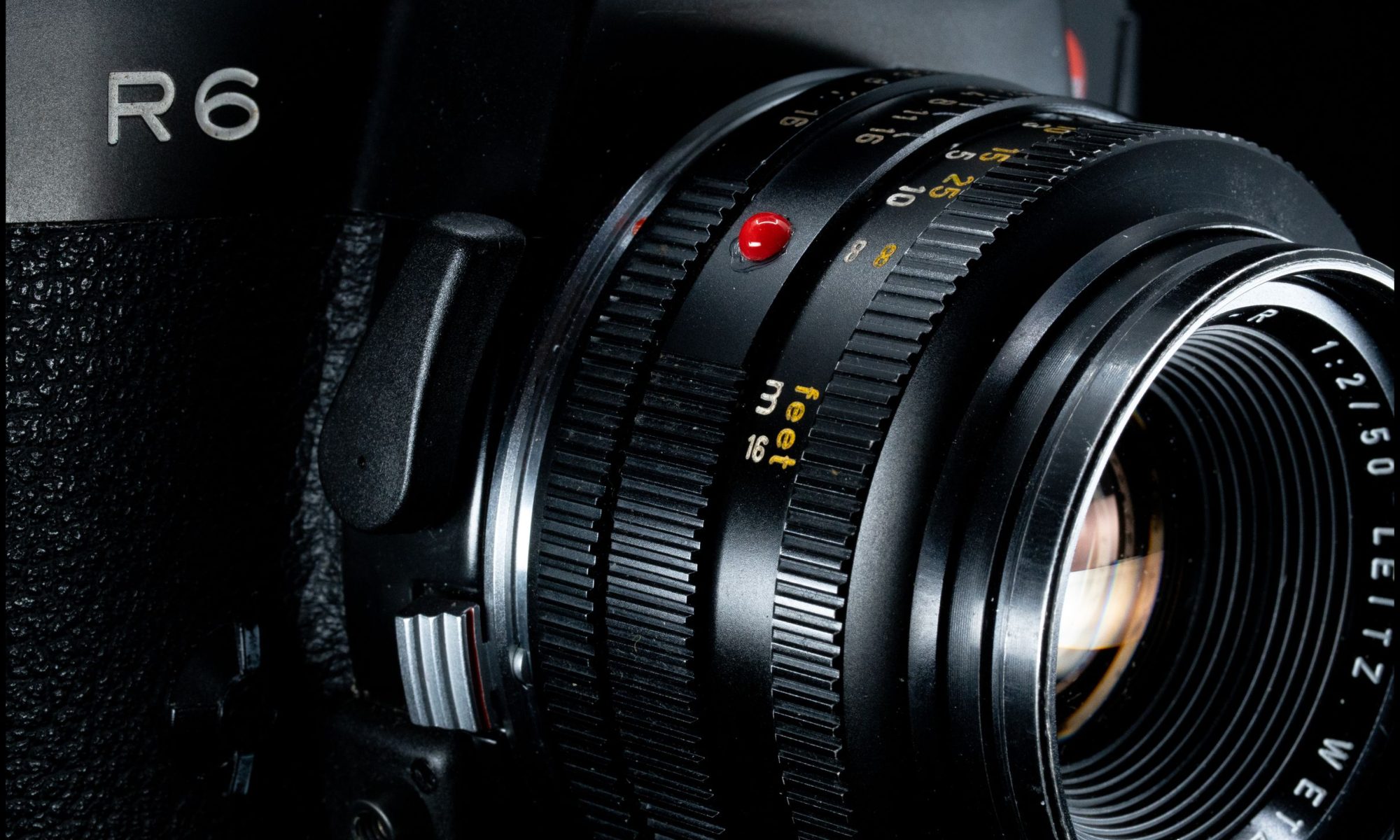Just like in the M serie, Leica also has the magic ‘6’ number in the R series. Just like the M6, the R6 is legendary. Both are fully manual operated cameras with only a battery for the light meter. They are like brother and sister. The M6 is a rangefinder, the R6 a SLR. Also in terms of age, they are not far apart. My black R6 dates from 1989, the M6 from the nineties. Both cameras have their undeniable charm, but the R6 doesn’t share the iconic status of its M counterpart. That’s a shame because every Leica fan should own this combination. In this review I explain why.
The Leica R(eflex) was meant as the answer from Wetzlar to the growing competition and popularity of the SLR. Leitz till then only built rangefinder cameras and saw nothing in those ‘noisy flipping mirrors ‘ when taking pictures. Leica’s believed in their compact and reliable expensive rangefinders. Als well for the professional photographer and the serious amateur. Entire handcrafted manufactured quality machines with characteristic German precision. A Leica was therefore not affordable for everyone but fortunately there were countless (German) alternatives. But Leica saw the danger and also wanted to build a name for itself on the SLR market. The thus far ‘bulky’ Visoflex attachments for the M-series (where you actually made an SLR of your M) were not at all popular. There had to be a Leica SLR. In 1964, the new Leicaflex lead to the launch of the brand new R mount for an entirely new series of camera and lenses. But the camera turned out not to be as innovative enough to compete with its Japanese sibblings. For this, the collaboration with Minolta was sought, which had a name and fame with cheaper, yet high-quality and efficient SLRs. Instead of competing against Japan, they worked together. Both companies already knew each other from the success of the famous Minolta/Leica CL rangefinder camera. In the early seventies, the first R camera, the R3 (coincidentally, the M series was also created with the M3 as the first number), was successfully launched. A total of seven versions would appear, before Leica pulled the plug on the R series analogue film SLR in 2009.
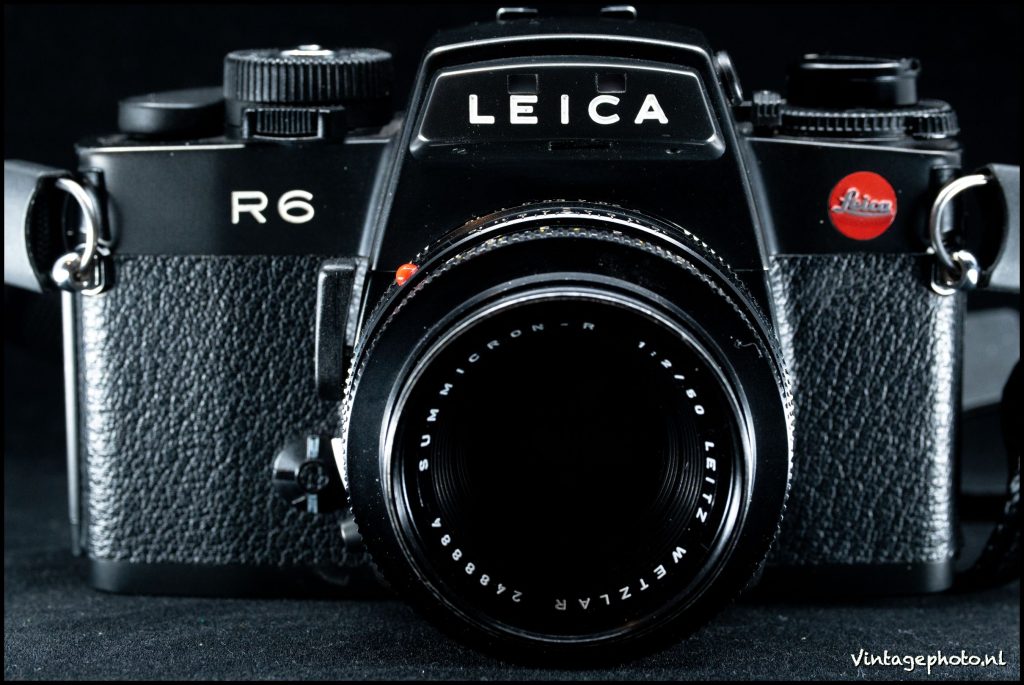
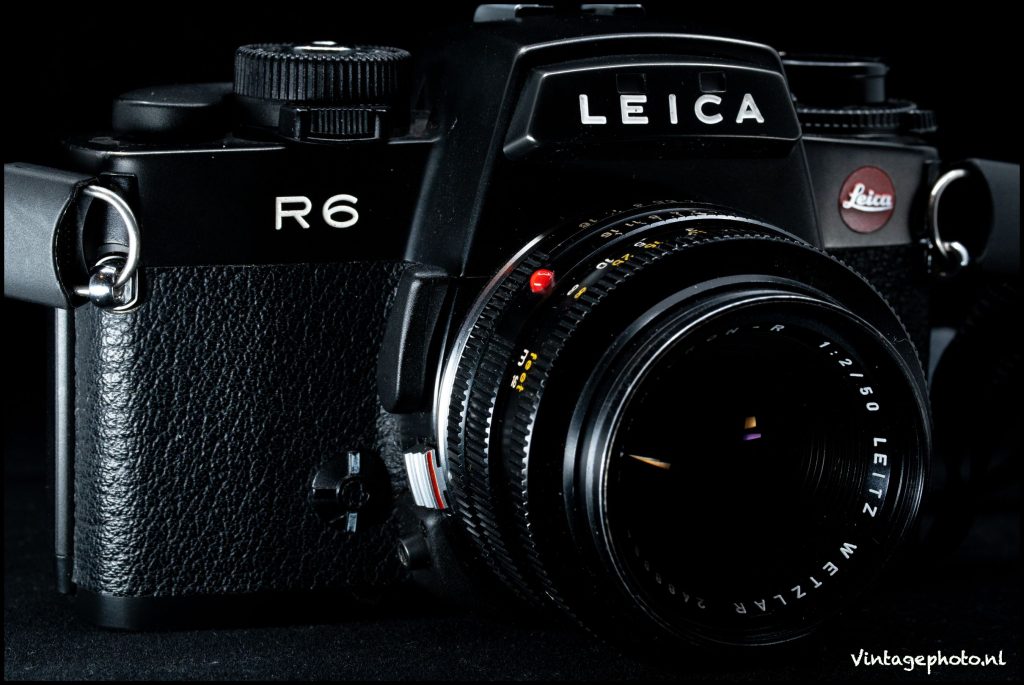
In the Leica fan community the Leicaflex and the R6 are the most wanted SLR’s because they are completely manual and take pictures without a battery. This is in contrast to the electronic versions that do not work at all when the battery is used up. Intelligent cameras such as the R8 and R9 with automatic programs also, according to fans, affected the pure character of Leica, which is referred to as offering “only the essential” to any camera and keep photography simple and pure. The Leicaflex and the R6 therefore nowadays have a kind of star cult status and are highly sought after in the vintage community. The prices for these cameras are -although rising- still significantly lower than the M cameras and lenses. The R lenses, in fact the same but SLR versions of the very expensive M glass, are also cheaper. And that does mean that you can acquire real Leica glass for relatively little money with an excellent, original Leica camera. And so we come to the Leica R6.
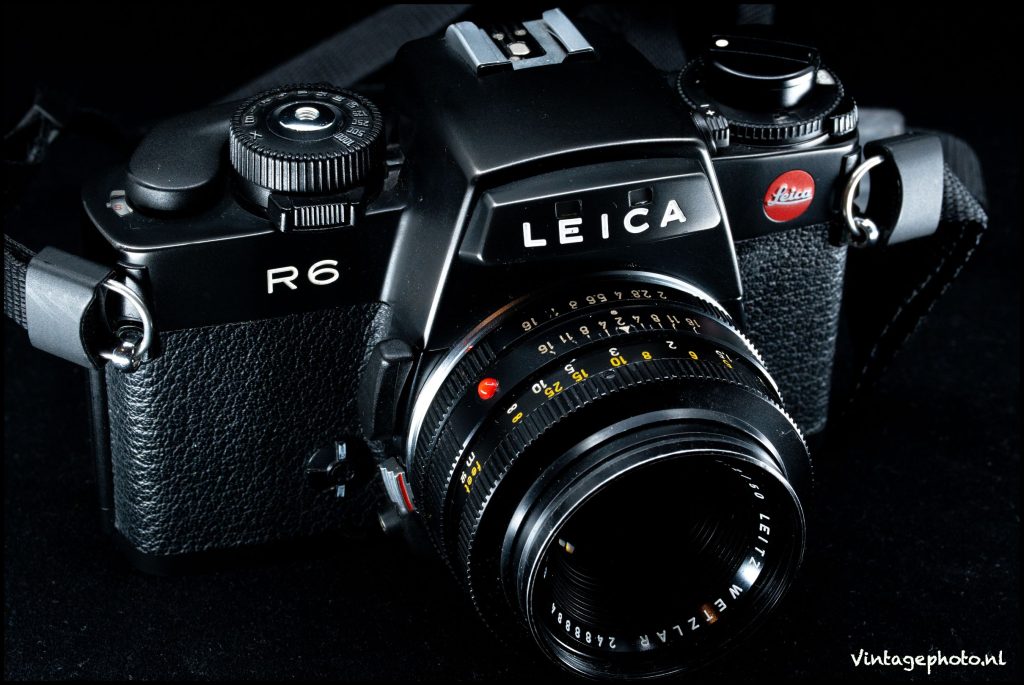
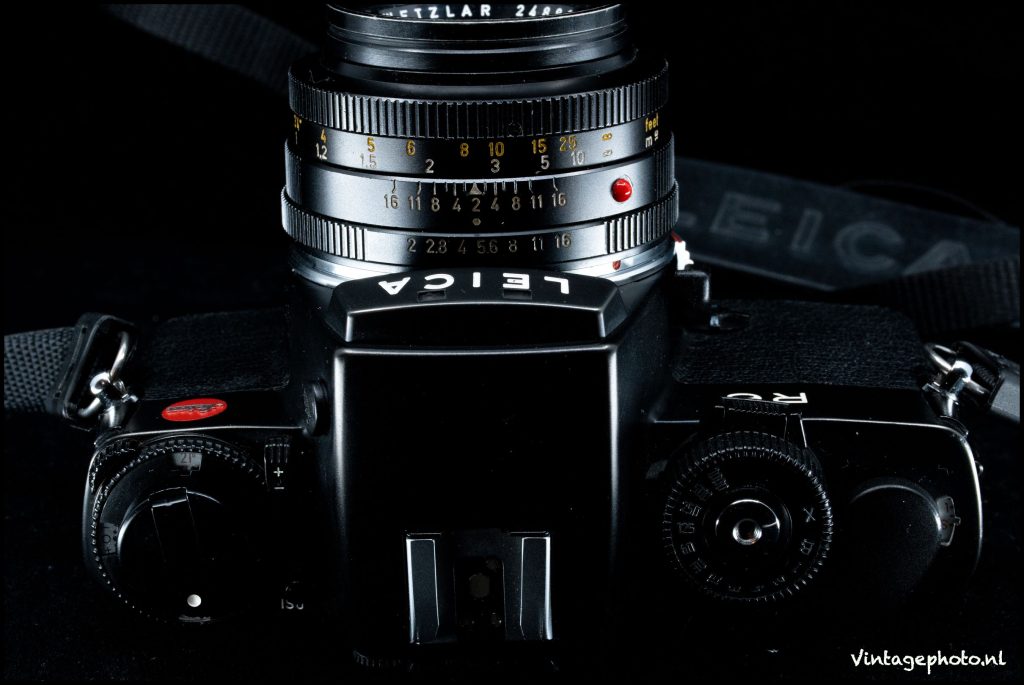
My love for the R6 started with unpacking. The camera is nice and compact, it fits well in the hand. What are the specs of the camera? Striking, innovative? No. The Leica is comparable with the many similar cameras of the same time, often much cheaper and mostly from Japan. The shutter runs up to a modest 1/1000s and on the large shutter back to 1/s and Bulb. There is a fixed flash setting with 1/100s. The classic shutter cloth has been replaced by metal, vertically running slats. The light measurement takes place through the lens with a TTL diode with a coupled ASA setting option (12-3200). On top of the camera there is the possibility of under- and overexposure in small 1/3 stops. These are visually displayed in the far left screen on the top of the body. On the far right is a similar screen, but for the film counter. The camera has two light methods: integral measurement over the entire surface of the plane and selective measurements (spot metering) through the inner circle. The setting for this is done with a small switch on the left of the shutter speed button. Here, the light metering itself can also be activated. In the viewfinder image, LEDs visually indicate whether there is under- or overexposure in whole and half stops.
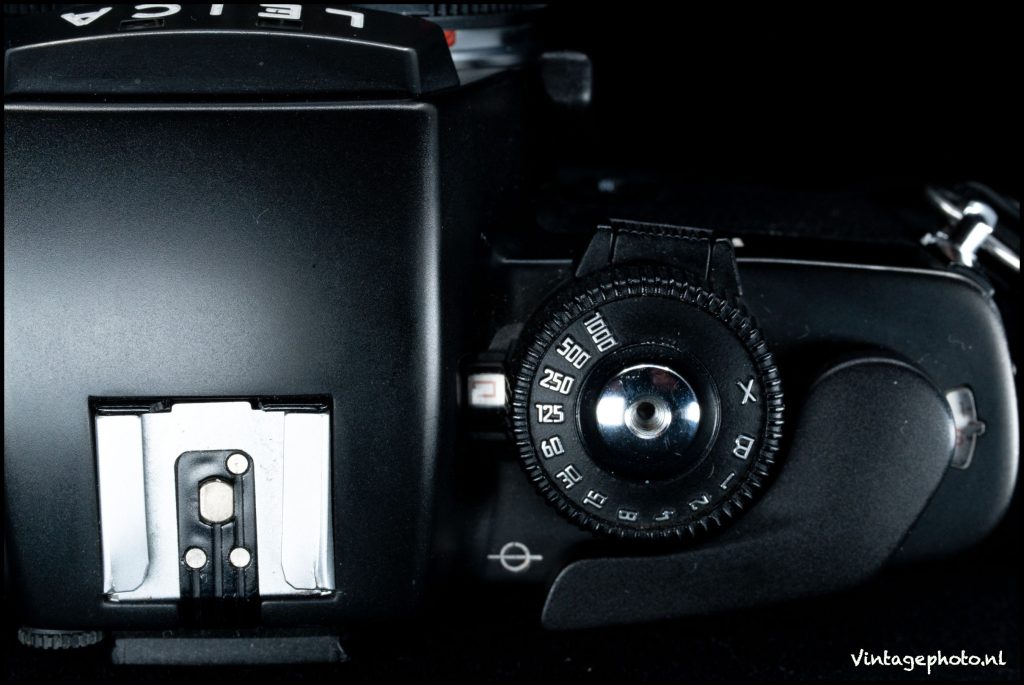

Nevertheless, the camera has some interesting extra and useful features: for example, the shutter and aperture settings in the viewfinder image can be illuminated in the dark. For this purpose, a button on the lower left of the body is applied. Furthermore, the sharpness of the viewfinder screen (diopter, +2, -2) can be adjusted. The focus screens can be exchanged, there are no less than 5 different focusing screens. The standard included screen has a split-image rangefinder circle to quickly focus on lines. The blur is also visually emphasized by the ‘flickering’ of the light in the circle.
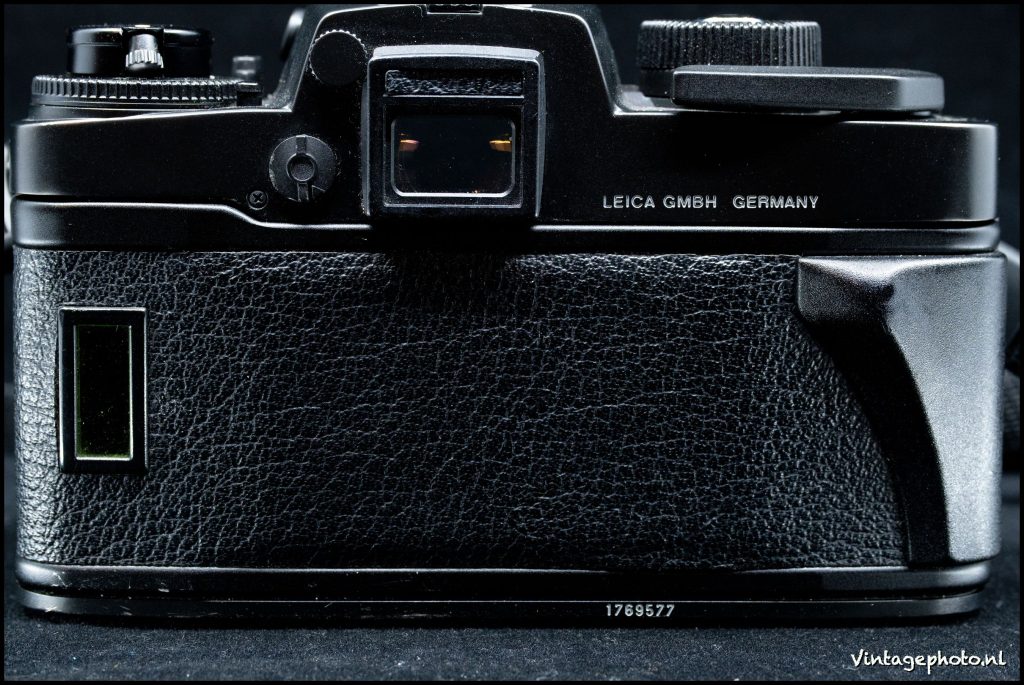
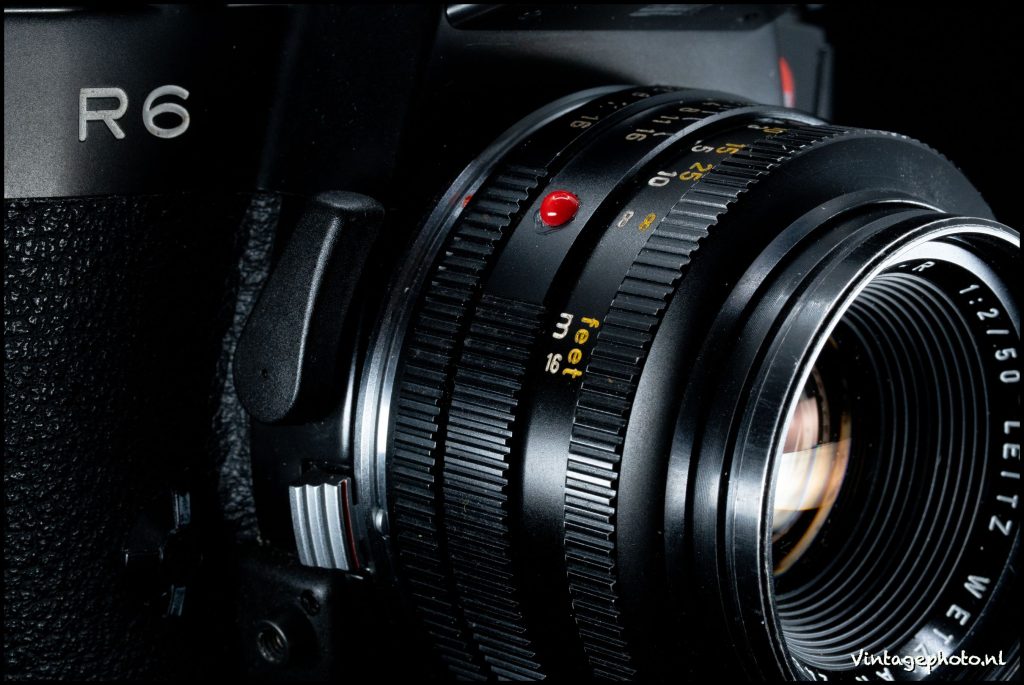
Flashing is possible at all times up to 1/100s, via the central hot-shoe or via a coax / PC link cable to the right of the lens connection. Classic flashbulbs can also be used. Double exposures are also possible by holding down the ‘rewind’ button and ‘flushing’, which only activates the shutter for a second shot on the same negative. The camera has automatic aperture control which means that you always look through the viewfinder image with the maximum aperture. The ‘depth of field’ indicator button can be used to check the current aperture setting through the lens.
A motor winder can be connected to the R6 (2 frames per second), as well as the DB2 databack to project relevant information (including timestamps) onto the negative.
The R6 has a manual self-timer with a delay of 9 seconds. For this, the self-timer can be turned clockwise and the shutter release button can be pressed halfway. The LEDs at the front of the body flash until the shot is taken.
The exposure meter, LEDs and viewfinder assist light are powered by common SR44 button cell batteries on the bottom of the camera. The battery voltage can be checked by holding down the test button for 5 seconds, left on the camera body, 5s. Pay attention to the LEDs on the front, if they remain brightly lit, the voltage is sufficient.
On the R6, R and M lenses (via a Visoflex or third party adapter) can be used. Please note that the Leica lens system works with so-called ‘cams’ that communicate the information from the lens (manually) to the body, such as the maximum aperture of the lens. The later ROM electronic contacts can exchange more different characteristics of the lens to the body.
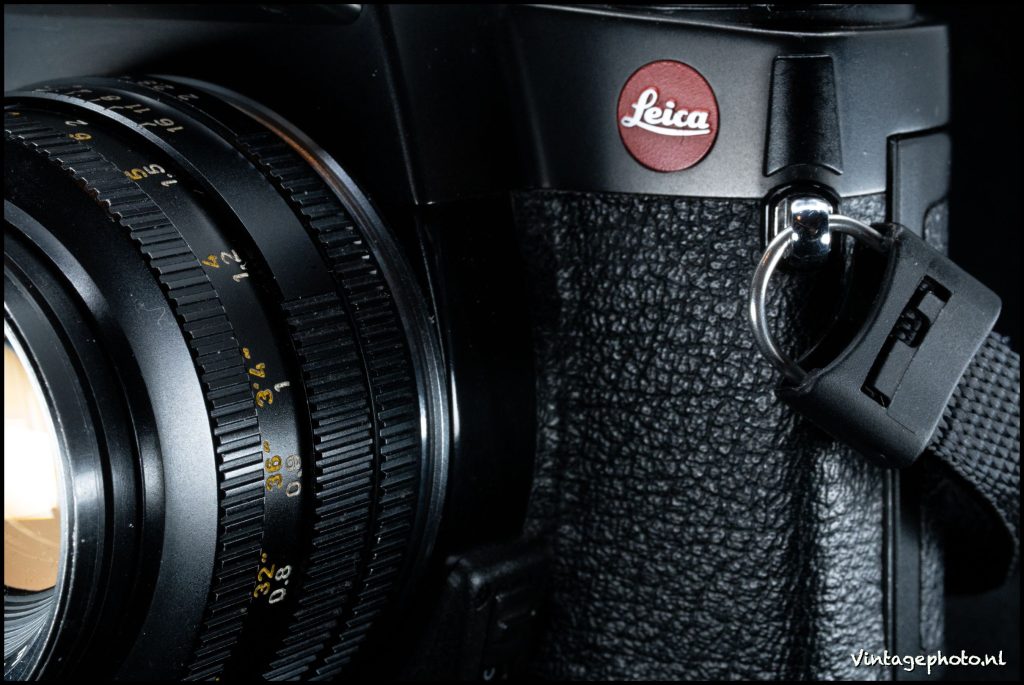
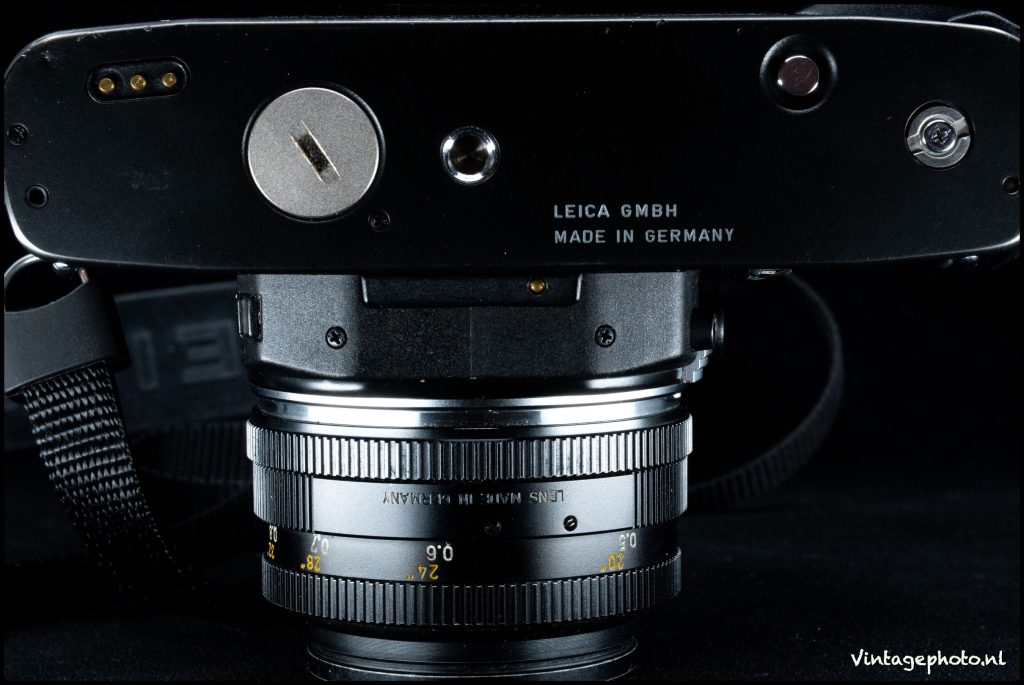
On the back is a film cartridge window and at the bottom we find the contacts for the databack and of course the tripod connection.
The film inlay is clearly improved on the Leica R models: the back is opened by pulling out the rewind crank. Insert the beginning of the film into the takeup spool on the right, then pull out the roll over the width of the camera and secure it on the left by pushing the rewind crank back. In the small film counter window, continue winding until No. 1 is in place.
A full manual of the Leica R6 can be found on Mike Butkus site.
The R6 distinguishes itself positively from various SLR cameras. This is mainly due to the low weight and compactness of the body. The Japanese competitors are often bigger and heavier. The viewfinder is large (0.8 magnification) and clear, focusing goes fast and above all precise. For a manual camera, the light meter and the ingeniously working LEDs and auxiliary light in the dark give you everything you need. Especially the certainty that the camera will not let you down when the battery is empty. The R6 is a beautiful and solid entry-level camera in the second hand Leica world. Especially for those who see the M series with too high a price tag. With the Leica R lenses there is also no qualitative difference and even one big advantage: you can focus more closely with the lenses of the R-system.

